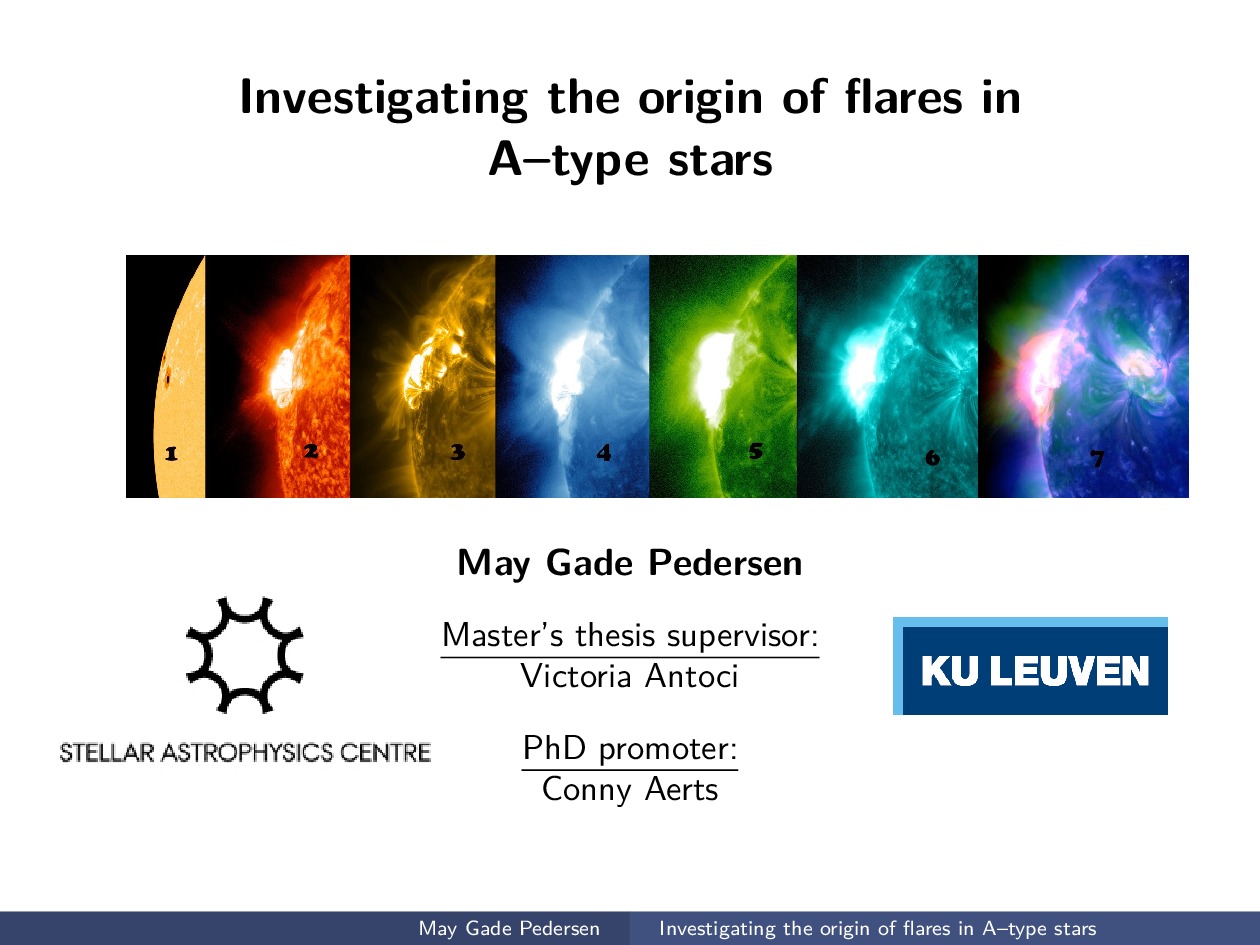Date of upload:
08.09.2016
Co-author:
Victoria Antoci (SAC, Aarhus University) and Heidi Korhonen (Dark Cosmology Centre, University of Copenhagen)
Abstract:
Recent studies show evidence of flare-like features in 33 Kepler A-type stars which were interpreted to be intrinsic, contradicting theory. Flares in late-type stars are generated through the reconnection of magnetic field lines in stellar atmospheres. For magnetic fields to be sufficiently strong to emerge at the surface and form flares a dynamo is required, which is operated by a convective envelope. A-type stars only have shallow convective envelopes of the order of 1.3% of the total stellar radius and therefore are not expected to support flaring. On the other hand X-ray flares have been observed in strongly magnetic A- and B- type stars and through colliding winds in massive binary systems. Strong stellar winds vanish for late B-type stars and normal A-type stars only have weak global magnetic fields. Therefore, neither reconnection or strong stellar winds should support flaring in A-type stars. We analyse the 33 A-type stars previously found to be flaring, setting specific criteria in order to identify these flares. Our results strongly disagree with the numbers found in literature. However, the positive detections follow the expected correlation between flare duration and intensity. We present results on our investigation of the origin of these flares, considering effects from contamination and combined light as well as study binarity from spectroscopy and possible circumstellar disks.
